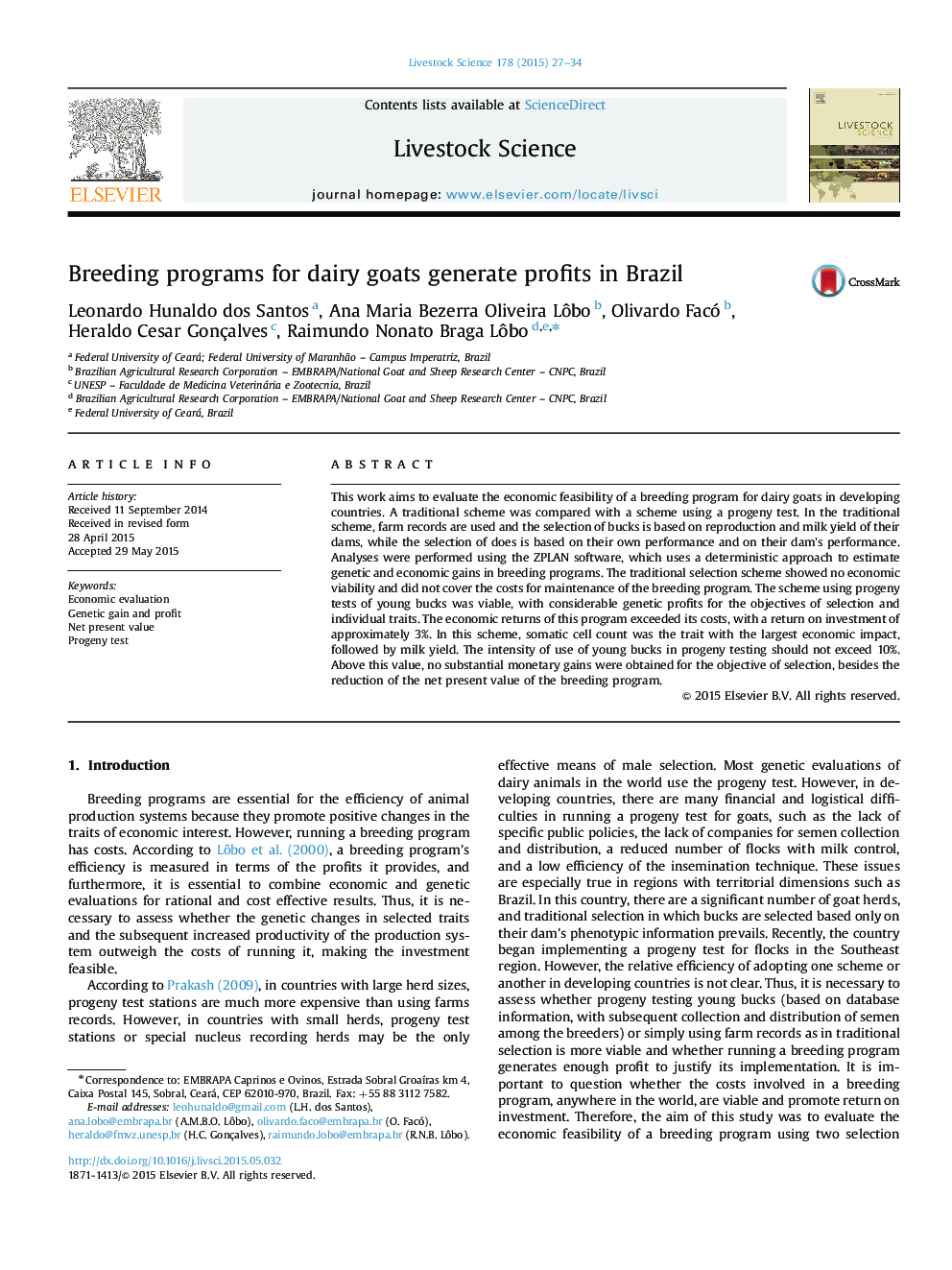| کد مقاله | کد نشریه | سال انتشار | مقاله انگلیسی | نسخه تمام متن |
|---|---|---|---|---|
| 2447058 | 1553954 | 2015 | 8 صفحه PDF | دانلود رایگان |
• The economic feasibility of breeding program for dairy goats was evaluated.
• The genetic and economic gains for two selection schemes were compared.
• The economic returns of progeny test schemes exceeded its costs, with return on investment of about 3%.
• The trait of greater economic impact was somatic cell count followed by milk yield.
This work aims to evaluate the economic feasibility of a breeding program for dairy goats in developing countries. A traditional scheme was compared with a scheme using a progeny test. In the traditional scheme, farm records are used and the selection of bucks is based on reproduction and milk yield of their dams, while the selection of does is based on their own performance and on their dam's performance. Analyses were performed using the ZPLAN software, which uses a deterministic approach to estimate genetic and economic gains in breeding programs. The traditional selection scheme showed no economic viability and did not cover the costs for maintenance of the breeding program. The scheme using progeny tests of young bucks was viable, with considerable genetic profits for the objectives of selection and individual traits. The economic returns of this program exceeded its costs, with a return on investment of approximately 3%. In this scheme, somatic cell count was the trait with the largest economic impact, followed by milk yield. The intensity of use of young bucks in progeny testing should not exceed 10%. Above this value, no substantial monetary gains were obtained for the objective of selection, besides the reduction of the net present value of the breeding program.
Journal: Livestock Science - Volume 178, August 2015, Pages 27–34
